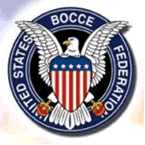Two Boys in a Drawing
Bocce is based on one of the oldest diversions known to man—throwing something at a target. In the case of bocce, a small ball called a pallino is thrown onto the court. Players then bowl larger balls toward the pallino to see who can get the closet. A painting of two boys playing a similar type of game was found in an Egyptian tomb and dated to 5200 B.C.
From Egypt the game apparently made its way to Greece and then to Rome. Roman soldiers played a game like bocce during the Punic Wars in the Third Century B.C. In this version of the sport, stones were used instead of balls. Later, the Romans played the game with coconuts they brought back from Africa. Emperor Augustus (31 B.C.-14 A.D.) played the game and became the first in a long line of notable public figures who enjoyed bocce or a closely related type of sport.
Quite a Distraction
Bocce shared a fate common to many games of the Middle Ages—it was banned by both kings and the church. In 1319, Roman Emperor Charles IV outlawed the game because it took people’s attention away from military matters. King Carlos of Spain would issue a similar ban. Perhaps they were right. Legend says that English Admiral Sir Frances Drake was playing Bocce when he was told that an attack by the Spanish armada was imminent. His response: “First, we finish the game, then we have time for invincible armada.”
Just a few years before Sir Frances supposedly spoke those words, the Republic of Venice had also outlawed bocce in 1576. Those caught playing the game were fined and in some cases sent to prison. The Catholic Church also condemned bocce because it led to gambling.Any game that people find competitive and enjoyable will overcome even official attempts to stop play. Bocce was no exception. It found a following in the streets, alleyways, parks and town squares of Europe, particularly in Italy and France.
Just What is Bocce?
Today’s version of bocce has elements of bowling, horseshoes, shuffleboard and billiards. Bocce can be played on nearly any type of surface from grass to asphalt to sand, though officially it’s played on packed dirt or gravel. The game requires strategy and accuracy and can be enjoyed by players of all ages and athletic abilities.
A bocce court is 10-13 feet wide and between 60 and 100 feet long. Boards that are four and one-half inches tall surround the court. Two to eight players can compete at a time. The pallino, sometimes called the jack or pig, is rolled onto the court. This ball becomes the target. Players roll larger balls to see who can come closet to the pallino. Players can move the pallino with their balls or knock opposing balls further away. This is where the strategy comes in. In a variation of the game called raffa, balls may be tossed rather than rolled.
Who’s Who in Bocce Throughout history, some notable names have been associated with the game of bocce. Galileo and deVinci reportedly enjoyed the sport, as did Queen Elizabeth and George Washington. Washington is said to have built a bocce court on his Mount Vernon estate in the 1780s.
When famed Italian soldier Giuseppe Garibaldi was not busy fighting battles to unite Italy, he was an avid bocce ball competitor. In his military travels, he took the game with him and introduced it to new parts of the world.



